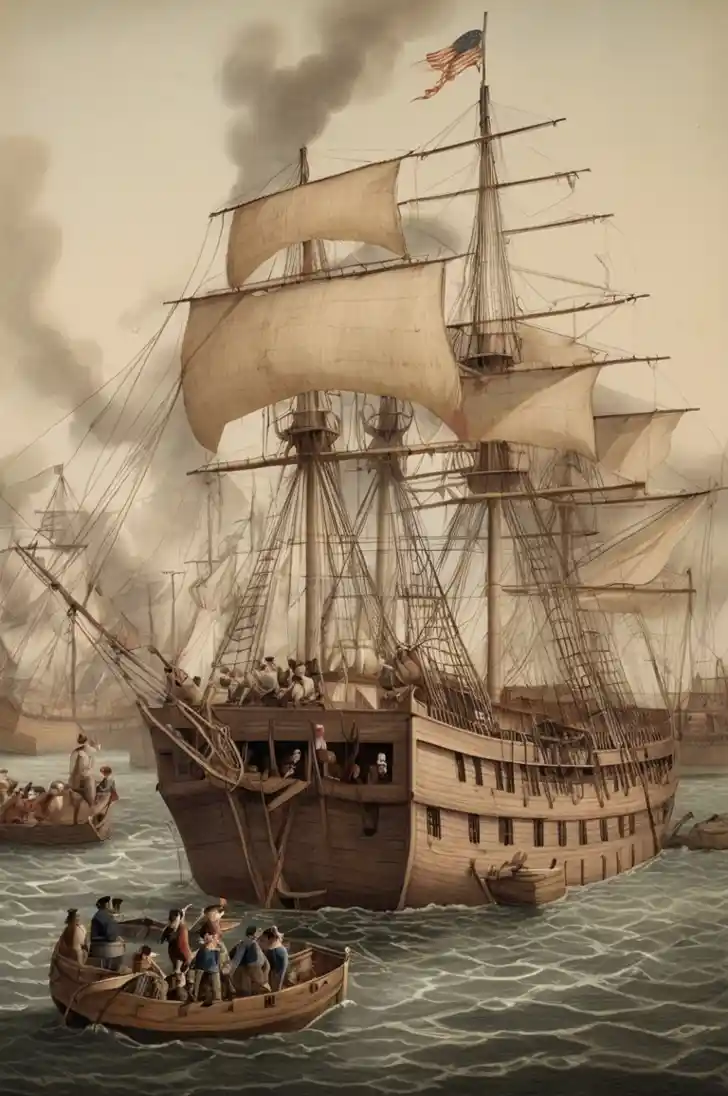The Boston Tea Party: The Spark That Ignited a Revolution
The Boston Tea Party stands as one of the most iconic events in American history, a moment that not only symbolized defiance but also set the stage for a revolution. This act of protest against British taxation policies became the rallying cry for colonists seeking freedom from oppressive rule. But what exactly happened on that fateful night in December 1773? And why did it resonate so deeply with the American colonists? Let’s dive into the story of the Boston Tea Party and its enduring legacy.
The Road to Rebellion: Taxation Without Representation
By the mid-18th century, tensions between the American colonies and Great Britain had been simmering for years. The British government, burdened by debts from the French and Indian War, sought to replenish its coffers by imposing taxes on its colonies. The infamous Stamp Act of 1765 and the Townshend Acts of 1767 were met with fierce resistance from colonists, who argued that they should not be taxed without representation in Parliament.
The final straw came with the passage of the Tea Act of 1773, which granted the struggling British East India Company a monopoly on tea sales in the colonies. While the act actually lowered the price of tea, it was seen as a sneaky way to force colonists to accept Parliament’s right to tax them. For many Americans, it wasn’t about the cost—it was about principle.
The Night That Changed History
On December 16, 1773, frustration boiled over in Boston, Massachusetts. A group of patriots known as the Sons of Liberty, led by figures like Samuel Adams and Paul Revere, organized a bold protest. Disguised as Mohawk Indians to conceal their identities and symbolize unity, they boarded three British ships—the Dartmouth, the Eleanor, and the Beaver—anchored in Boston Harbor.
In an act of defiance, they dumped 342 chests of British tea into the icy waters below. The value of the destroyed tea was enormous—equivalent to nearly $1 million today. But for the colonists, it was priceless as a statement of resistance.
This act was not just a protest against tea; it was a rejection of British authority and a declaration that the colonies would no longer accept unjust governance.
British Retaliation: The Coercive Acts
The British government’s response to the Boston Tea Party was swift and severe. In 1774, Parliament passed a series of punitive laws known as the Coercive Acts, or the Intolerable Acts as they were called by the colonists. These measures included:
- Closing Boston Harbor until the destroyed tea was paid for.
- Stripping Massachusetts of its self-governance.
- Allowing British soldiers to be quartered in colonial homes.
Rather than cowing the colonists into submission, these harsh measures united them further. Outrage over the Intolerable Acts spurred colonies to convene the First Continental Congress, where representatives began coordinating resistance against British rule.
The Boston Tea Party’s Role in Sparking Revolution
The Boston Tea Party was more than just a protest; it was a turning point that galvanized colonial opposition to British rule. It inspired similar acts of defiance in other colonies and fueled a growing sense of American identity.
The event also demonstrated that ordinary citizens could take bold action against injustice. It emboldened people to stand up for their rights and laid the groundwork for what would become the American Revolution.
By 1775, tensions erupted into open conflict with the battles of Lexington and Concord, marking the start of the Revolutionary War. The seeds of revolution planted on that cold December night in Boston Harbor had grown into a full-blown fight for independence.
Legacy of the Boston Tea Party
The Boston Tea Party remains a powerful symbol of resistance and liberty. It reminds us that standing up against injustice often requires courage and sacrifice. Today, it is celebrated as a pivotal moment in American history—a testament to the power of collective action in shaping the course of a nation.
The site of the Boston Tea Party is now home to the Boston Tea Party Ships and Museum, where visitors can learn more about this historic event and even participate in reenactments. It serves as a reminder of how ordinary people can spark extraordinary change.
FAQs
1. Why did the colonists dump tea into Boston Harbor?
The colonists dumped tea into Boston Harbor to protest the Tea Act of 1773, which they saw as an unjust tax imposed by Britain without their consent. It was an act of defiance against British authority and taxation policies.
2. How much tea was destroyed during the Boston Tea Party?
Approximately 342 chests of tea were destroyed during the Boston Tea Party, amounting to about 92,000 pounds (46 tons) of tea worth nearly $1 million in today’s currency.
3. Who were the Sons of Liberty?
The Sons of Liberty were a group of American patriots who organized protests against British policies, including the Boston Tea Party. Key members included Samuel Adams, Paul Revere, and John Hancock.
4. What were the Intolerable Acts?
The Intolerable Acts were punitive laws passed by Britain in response to the Boston Tea Party. They included measures like closing Boston Harbor and revoking Massachusetts’ charter, which further fueled colonial resistance.
5. How did the Boston Tea Party lead to the American Revolution?
The Boston Tea Party heightened tensions between Britain and its American colonies, leading to harsher British policies (the Intolerable Acts) and greater colonial unity. These events ultimately culminated in the Revolutionary War.
The Boston Tea Party wasn’t just an isolated act of rebellion—it was a spark that ignited an entire revolution, forever changing the course of history. Its legacy continues to inspire those who fight for freedom and justice around the world today.





